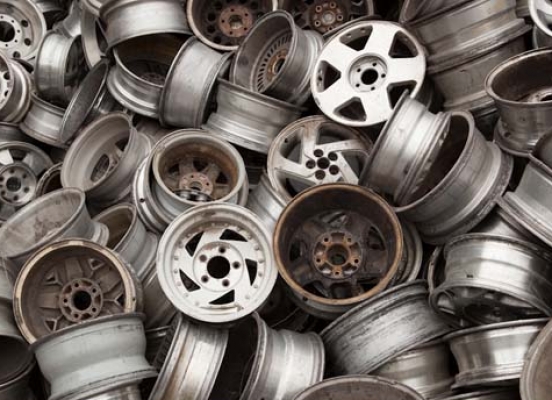Environmental Effects of Ferrous and Non-Ferrous Material Refinishing
The Indian ferrous and non-ferrous metals industry has been expanding at a firm pace in the past few years. We are sure there will be endless opportunities for the growth of India’s industry in the future. The country’s strong economic growth and supreme force on the ‘Make in India’ drive gives a lift to the manufacturing sector, thereby benefitting the ferrous and non-ferrous metal industry.
Metal industries are an essential part of an economy; they form the determination of any country’s manufacturing development.
In India, the manufacturing development began with the Tata Iron and Steel Company (TISCO) at Jamshedpur in 1907. It started its production in 1912, and then the Burnpur and Bhadrawati Steel Plants came up in 1919 and 1923 sequentially.
What if we say the refinishing industry is “Green”? But few unauthorized operators are spoiling its image. The reason is enough that the industry is facing challenging business conditions.
Why do we say it’s inherently “green”?
It is Green because it allows us to improve the primary materials’ properties and provide them with appropriate surface properties. Mass production of substrates lowers the cost. These properties help increase the life of elements and effectively help conserve our resources and the environment.
For example, electroplating fabricates small layers of just a few microns onto base materials utilizing costly resources in small quantities. These extremely thin coats provide the base material characteristics such as significantly increased corrosion and wear resistance while providing a surface look to meet end-user demands.
However, to keep this process, environment friendly requires teamwork. Teamwork between the community, government, company management, and employees efficiently reduces the environmental impact.
Powerful environmental administration is essential because of the persistent effects of pollution invading the air, water, and land environment. This detailed knowledge of processes and outputs, chemicals, all elements, and metals is required. We can achieve constant development by establishing new preferences for action and repeating the course of action.
The ferrous and non-ferrous metal industry adds to air, water, solid waste, and noise pollution.
Suggested steps to prevent Air Emissions:
Selection of “smokeless” charging devices
The casting of coke dry quenching (CDQ) system
Choosing non-recovery-coke battery
Suggested steps to prevent Solid wastes and by-products:
Slag- It should be disposed of, with the dust from off-gas processing, in a landfill produced with evidence of slag and dust characteristics. Local geological positions also should be viewed when placing slag heaps.
Metallic waste- Metals from slag, filter dust, and waste metals should be retrieved and reused to sinter feed.
Acids -Pickling acid restoration sludge can be reused in steel plants (EAF and blast furnace) or prepared to create iron oxides.
Sludge- Sludge from wastewater processing may be within reused or else deposited in designated landfills.
Suggested steps to prevent Wastewater-
Develop a plant-wide water recycling program to maximize the performance of water use. More than 95 % of recycling of water is usually possible
Dry methods using extraction of dust from the plant material and premises can be achievable, and clean water should be obtained and handled before discharge
Consolidate spillages and leakages (e.g., using safety pits and drainage systems)
Suggested steps to prevent Noise-
Include the method structures or cover structures
Shield and embed scrap and plate/slab warehouse and administration areas
Encircle fans, insulate ventilation pipes, and practice dampers
Use foaming slag practice in EAFs ̇ Control of scrap treatment and transport during nights, where needed
The ministry of environment and forest is now working to cope with the environmental problems by adding new equipment to existing plants. This move reduces pollution by enhancing equipment design, and in some cases, is made to generate new methods that are less polluting than the traditional ones. There is a need to preserve the national resources by valorizing mineral waste, recycling scrap metal, and recovering metals.
Here are some aspects we can use to control the effect:
Start pollution control across all phases of the business.
Recognize scrap streams.
Established preferences for action.
Set the root element of the waste.
Recognize and execute trades that eliminate waste.
Estimate the results.
Further, the complete method documentation will recognize the waste streams and provide preferences for waste minimization possibilities.
Versed conclusions about possible changes will encourage:
Simple and effective operational enhancements
Rule changes including clients and suppliers
Corrections to less dangerous activities where feasible
Recycling and reusing where development is not possible
To use landfilling of dangerous wastes only as of the last alternative.
Several proposed and examined techniques and technology can benefit hugely in reducing the environmental influence and the running costs of refinishing equipment without spending large sums. We can use the most beneficial techniques only when we have a thorough knowledge of the actual operating expenses versus the new investment proceeds.

